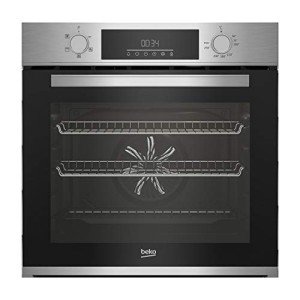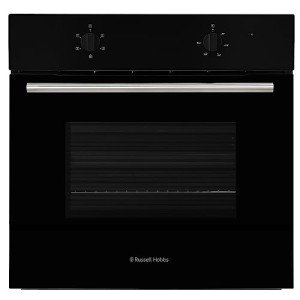 What Is a Single Oven Electric Fan – Http://40.118.145.212,?
What Is a Single Oven Electric Fan – Http://40.118.145.212,?
Single oven electric fan is a type of kitchen appliance that utilizes an internal fan to circulate hot air across the oven cavity. This can help eliminate hot spots and enhance the overall cooking experience.
Does your oven have fans? If so, does this make certain areas of the oven more hot or colder than others for a set temperature?
Functions
Oven functions (also known as cooking modes or setting) offer a variety pre-programmed options to accommodate an array of recipes and cooking needs. These functions control the operation of heating elements and the fan in the oven, allowing for more precise and single Oven electric cooker consistent results.
Most ovens are what’s known as ‘fan assisted’, which means that when the oven element heats up, there is an air-flow system that circulates hot air around the oven’s cavity to assist in cooking food. This helps reduce the time needed to preheat and allows for even cooking. In an oven, there are typically two fans: one that disperses hot air for cooking and another one that cools the oven. The cooling fan is controlled by a thermal switch. It will turn on automatically when the thermostat knob isn’t set to off.
Functionality for Convenience
Ovens are equipped with many features that make it easier to use them, such as the defrost function that uses low temperature to thaw food without cooking it. This speeds up the defrosting and prevents food from drying out or becoming partially cooked. The reheating feature is beneficial as it employs the gentle heat to reheat food items, allowing them to retain their flavour and texture.
Other helpful features include a child lock feature that locks the control panel, preventing children from gaining access or altering the oven’s settings. A minute minder is another useful feature that is able to be used in addition of the cooking functions and shuts off the oven after a set amount of time has passed, helping you to avoid forgetting to turn off the oven.
For those who love to cook a range of different meals frequently an oven that can perform multiple functions is ideal. A fan oven with roast function lets you cook a variety of meats and vegetables simultaneously on multiple racks, making it perfect for Sunday lunches or meals with the whole family. You can also make use of the grill and bake function to create a golden crust for cakes, casseroles, and potatoes.
Design
Built-in electric single ovens are available in a variety of sizes and styles that will suit your kitchen’s requirements. Certain models include additional features such as self-cleaning or a delay start. These features can add up to reduce time and effort in the kitchen. You can read reviews to see how other users rate these ovens.
A fan oven is equipped with a built-in fan that can circulate the air around the food to produce quicker, more consistent results than a conventional oven. This is especially beneficial for cooking dishes with a high fat content such as pies and roasts. You can tell if an oven is fan-based by looking at the control panel. Look for the fan icon or a fan with three pronged blades surrounded by a circle. Conventional ovens are usually marked differently and might not have the fan function at all.
Blomberg’s single fan assisted oven oven that is A-rated comes with a capacity of 71L and is built for performance as well as looks. It comes with a variety of options that include grill and fan assisted cookery. It also features an option to turn off the light, making cleaning simpler. It also comes with a touch-control programmable clock/timer and an easy to clean enamel interior.
Energy Efficiency
As appliances for the home, ovens contribute relatively little to the overall usage of electricity compared with devices such as refrigerators and air conditioners. However the type of oven and cooking method used may have a significant impact on the cost of energy. A majority of the latest cheap single oven built in ovens are more energy efficient than older models. This reduces energy consumption, saving you money on your monthly utility bill.
The main distinction between a conventional and fan oven is that a traditional oven has only one heating element, while a fan oven has both heating elements and a fan that circulates hot air around the food. Using a fan means you can use lower temperatures, which also cuts energy usage. Additionally, the fan can reduce baking time.
Another method to ensure you’re getting a single oven electric fan that’s as efficient as it can be is to search for one that has a brushless DC motor. This motor technology is more energy efficient than models that don’t have a brushless. It also reduces noise levels.
In addition to the model’s power rating, you’ll need to be aware of the energy rating, which should be listed somewhere on the appliance or in the manual. This number will provide you with an idea of how much energy the oven uses when in operation. You can then compare the price per kWh against your local electricity tariff. It will vary according to where you live.
The type of food that you cook, the temperature you set, as well as the length of time you cook it can all impact the amount of energy your oven consumes. The cooking process itself may affect the amount of electricity it uses in the same way that heating the oven prior to using it.
In order to make the most of your oven’s energy efficiency, make sure to turn it off after you’ve finished cooking and keep an eye on the amount of energy you use. Smart meters can provide accurate information about the amount of electricity your appliances cost. You can also research other cooking methods that use less energy.
Installation
There are costs to take into consideration when replacing or installing an electric fan oven, regardless of whether it’s the first time. These include getting rid of and removing the old appliance to the installation or upgrading of outlets and utilities lines. If the new unit is requiring a vent hood it is possible to install one. Shop around to find the best built in single oven price.
It’s easy to tell the oven that you bought has fans because it’s likely to be identified as fan on the control panel. Its fan circulates air continuously inside the oven chamber. This lets it reach temperature quicker and distribute heat evenly. On the control panel of traditional ovens, you may see an alternate icon or a the absence of a fan icon.
It is important to examine the wiring of the old device before hiring an electrician. If the older one plugs in directly to an electrical outlet and is plugged into a power socket, it should be easy for a professional electrician to wire it into your wiring system. If the older oven is hardwired to your circuit breaker or switchbox, it is more difficult. If the new model has more powerful than the older one, you’ll have to ensure that your circuit breakers are equipped to handle the extra voltage. It is also important to ensure that the cables that are used are long enough.
Installation costs will also vary based on the location of your kitchen in your home. A freestanding unit that can be easily moved from room to room will cost less than a wall mounted unit that requires cutting into cabinetry or a counter to set up. Additional costs could be charged if you have to run gas or electrical lines or ventilation ductwork.
 An easy electric oven installation should cost no more than $70-$155 if you are replacing an existing oven in the same location. A new outlet for the kitchen will increase the cost by about $200, and installing a vent hood will add around $300.
An easy electric oven installation should cost no more than $70-$155 if you are replacing an existing oven in the same location. A new outlet for the kitchen will increase the cost by about $200, and installing a vent hood will add around $300.
